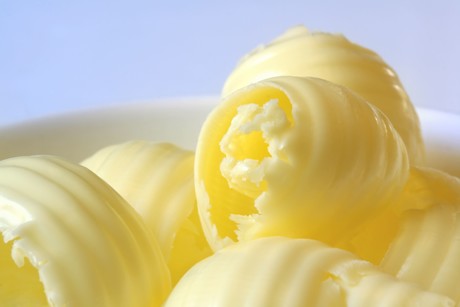Beating butter prices

High butter prices can’t be absorbed forever and consumers will only wear a certain number of price rises. Why is the price so high and what can you do about it?
Back in 2016 the price of milk fell below the production costs, Murray Goulburn (MG) slashed farmgate milk prices and the ball started rolling towards Saputo buying MG in 2018. With milk prices so low it seems counterintuitive that simultaneously butter process are at all-time highs — between July 2016 and October 2017 the price of butter price rose 60%.
But butter needs milk fat and demand for milk fat is high. Value-add dairy products such as cheese and cream, which are in increasing demand in Asia and the US, rely on milk fat and are higher financial yielding for dairies than butter. There is not a lot of logic in this whole business; for example, cheese traditionally commands higher prices than butter even though it uses less milk in its production.
Demand for butter is increasing, partially driven by TV cooking shows that strongly advocate butter. Australian consumers are now buying more butter than margarine.
Also consumers are now turning back to full-cream milk, which is also reducing the quantities of milk fat available to churn into butter. Previously, a large proportion of the milk fat used to make butter came as a by-product from the production of skim milk. So, with skim milk production down, the available milk fat to make butter is likewise down.
Another factor involved in the lower milk fat availability is the use of lower grade feed stock to feed herds. This product results in lower yield of milk fat from the herd.
Prices for buttery products like croissants have increased to partially cover increased butter costs but consumer resistance to price hikes and manufacturer inability to absorb higher ingredient costs mean that alternatives are needed.
Butter alternatives need to meet certain criteria if they are to work in your kitchens and processes:
- Same melting point as butter — 30°C
- Buttery flavour and aroma
- Same fat content as butter — 83.5%
- Same moisture content as butter — 16%
- Salt — 1%
- Direct replacement in recipes, ie, same weights and measurements
- Even, yellow colour
- Smooth texture at ambient temperature
- Suitable for partial or complete replacement of butter
Vegetable shortening can be used as an alternative to clarified butter. One such product, Peerless Food’s Shef, claims a few points that make it more user-friendly than clarified butter. Firstly, users don’t have to ‘clarify’ the product. With butter, users must render the butter so that its water content evaporates and milk solids separate and then skim off the milk solids — none of this is needed with Shef. Also the vegetable shortening does not spatter when frying and, with its high smoke point, is less likely to burn than comparable products. It is also suitable for vegans and Halal products.
So there are ways that food manufacturers can circumvent the slippery slope of butter price increases.
Food creations on the shelf for shaping up and flying away
As we start into summer, there have been some interesting dairy creations hitting the shelves for...
Six on the shelf: Summer treats by the block load
Summer treats hitting the supermarket shelves include truffles by the block, ice creams for road...
What's new on the shelf
From classic reinspired ice cream to West African flavours in a jar and whiskey aged in a gaol,...








